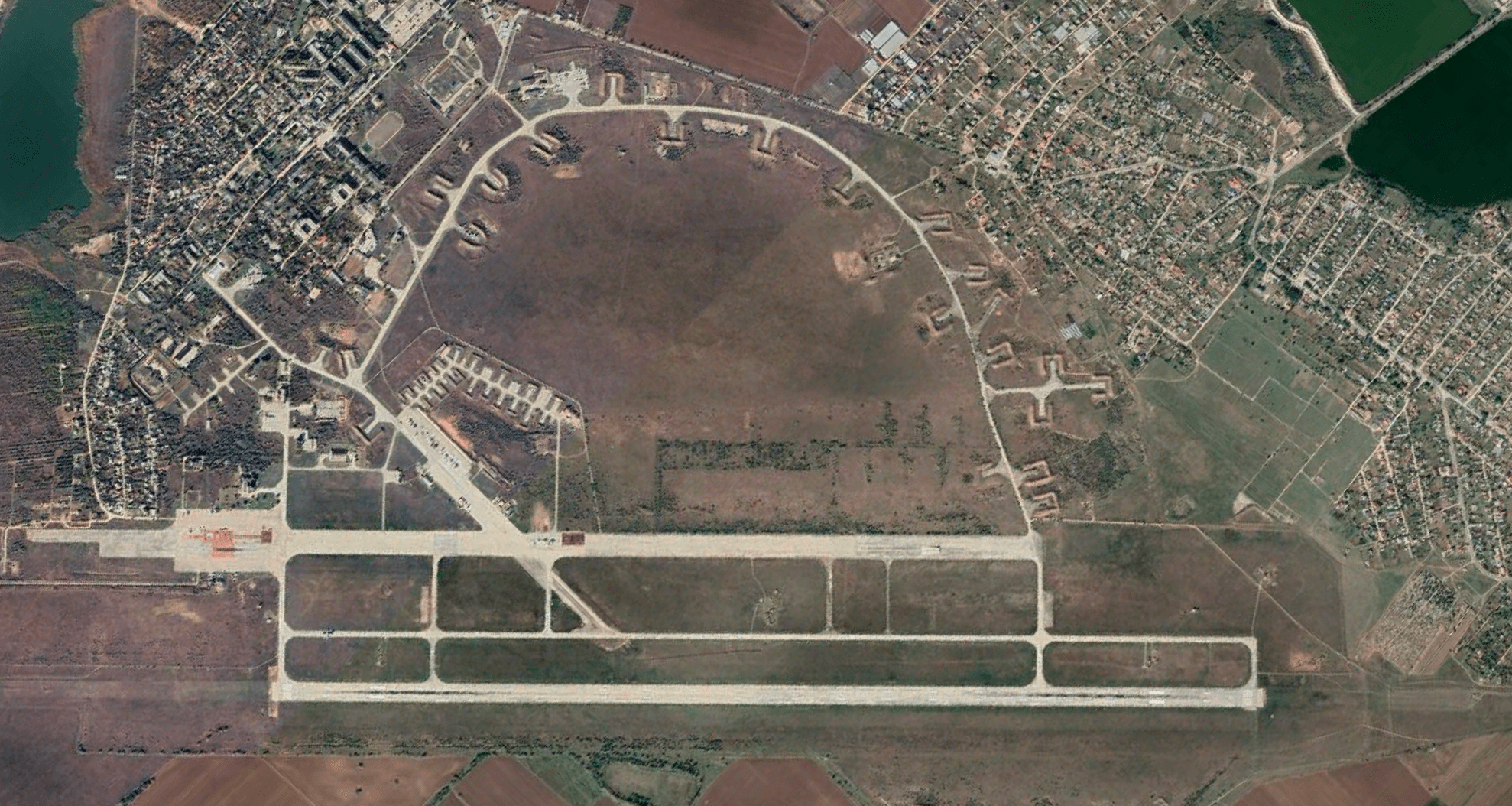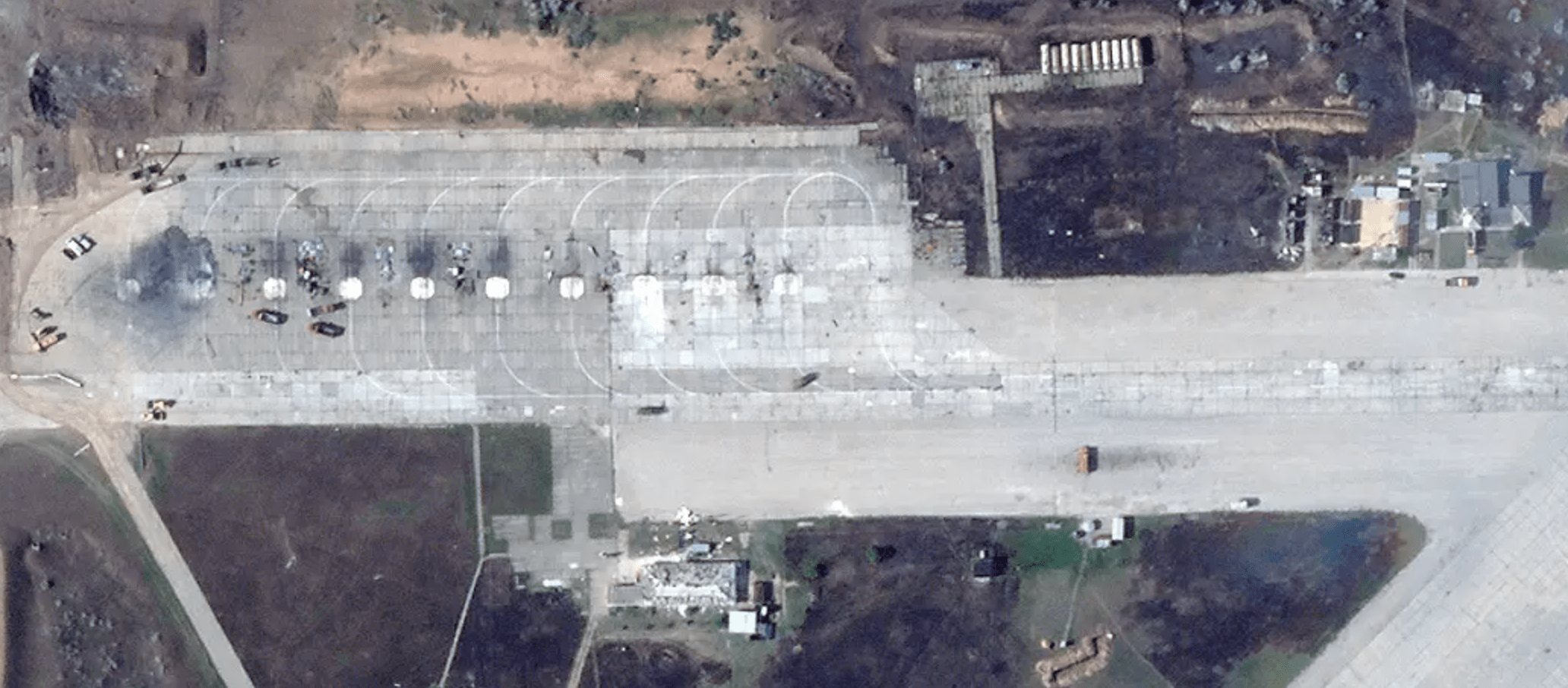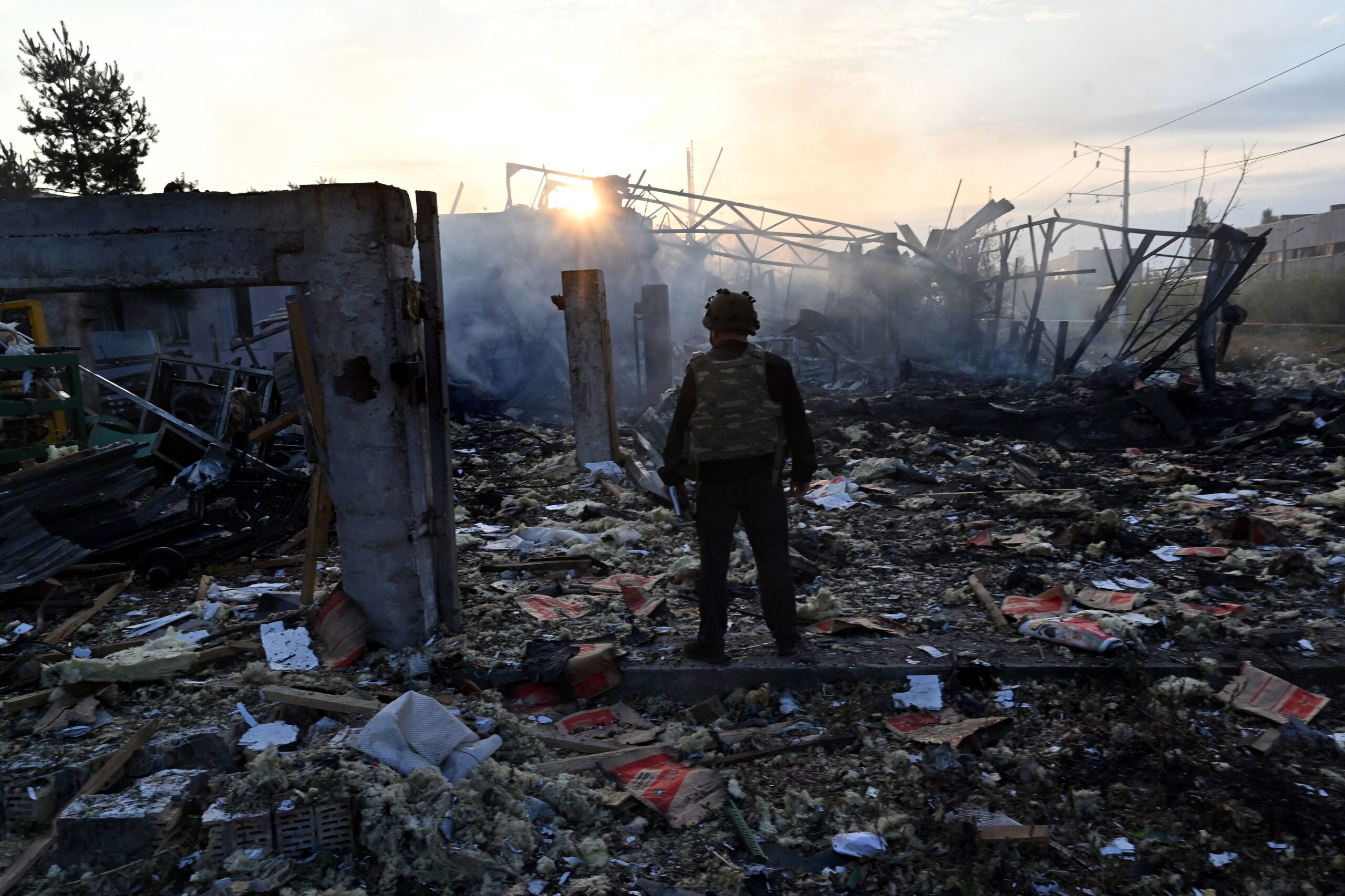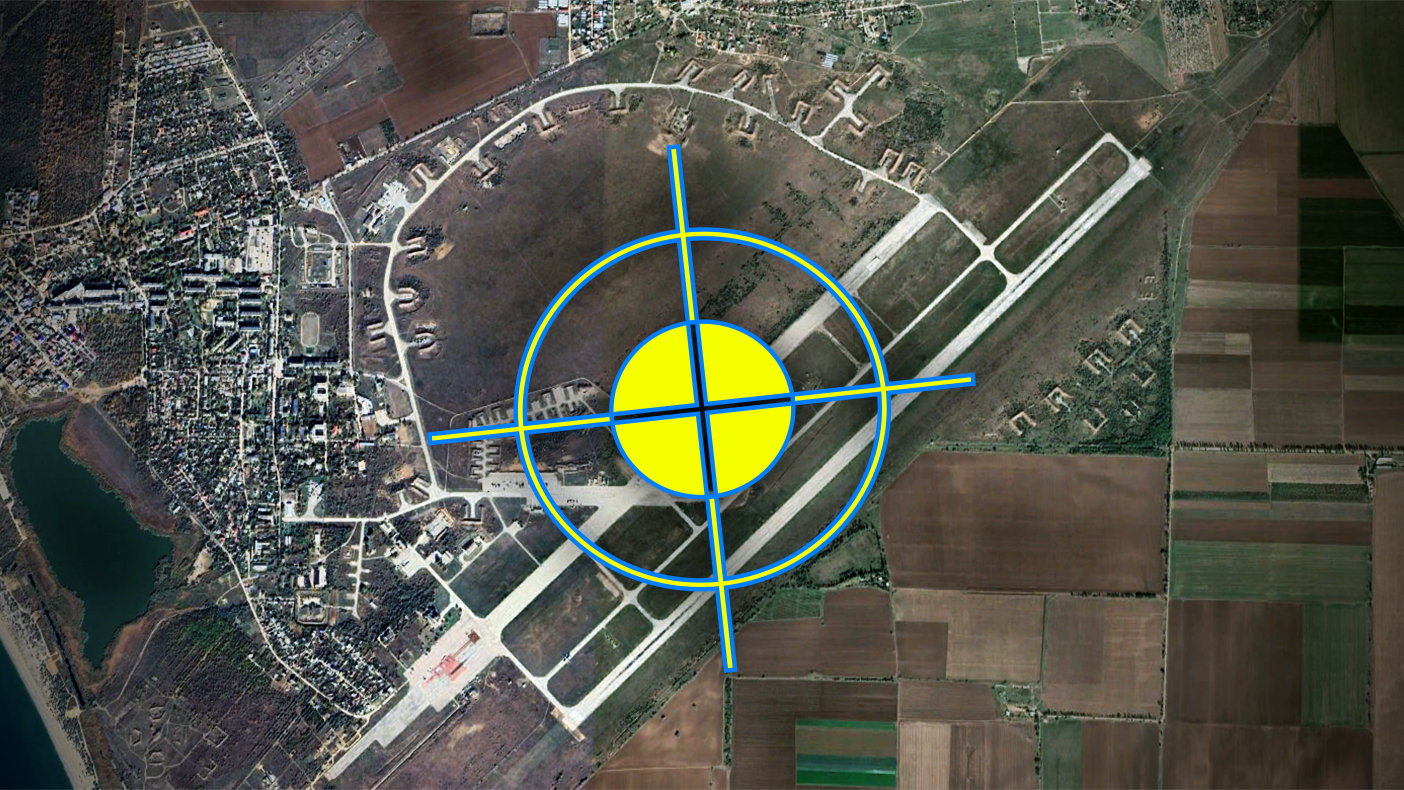Both Russia and Ukraine have launched new waves of large-scale airstrikes, as Ukrainian President Volodymyr Zelensky arrives in Washington for talks with his U.S. counterpart Joe Biden. Ukraine has said it struck Saky military airfield on the Russia-annexed Crimean peninsula, while Russia, for its part, has hit Ukraine with its largest missile barrage since mid-August.
The airbase at Saky was targeted in the latest Ukrainian attack on Crimea, according to authorities in Kyiv. The Ukrainian airstrike reportedly involved numerous drones, used to overwhelm Russian air defenses, which were then followed up by Neptune cruise missiles — surface-to-surface versions of the Ukrainian-developed anti-ship missile.
In a statement posted to social media, the Ukrainian Armed Forces’ communication department said:
“On the night of September 21, the Defense Forces of Ukraine launched a combined attack on a military airfield of the occupiers near the city of Saky in the temporarily occupied Crimea.”

A source within the Security Service of Ukraine (SBU) stated that there were at least a dozen Russian warplanes — probably mainly Su-24 Fencer and Su-30SM Flanker types — and a Pantsir air defense system at the airfield at the time of the attack.
The SBU also said that Saky accommodated a drone training center and that the strikes had “inflicted serious damage to the equipment of the occupiers.”
“The occupiers cannot feel safe in the occupied peninsula,” the SBU source added.
The Russian military also admitted that the attack took place but claimed that it had shot down 19 Ukrainian drones over Crimea and the Black Sea.
Meanwhile, an advisor to Sergei Aksyonov, the Russian-installed head of Crimea, said that none of the Ukrainian missiles hit their target.
The possible use of the Neptune cruise missile in such a high-profile operation, possibly timed to coincide with Zelensky’s visit to Washington, also brings into focus Kyiv’s repeated demands for long-range strike capabilities from the United States. Most notably, Ukraine has long campaigned for the Army Tactical Missile System (ATACMS), a ballistic missile system that seems almost certain to be omitted from the next U.S. defense aid package, expected to be worth $325 million.
As for the land-attack Neptune, this is a significant development in itself and a weapon that we have explored in detail in the past. Suffice it to say, this long-range weapon has been earmarked by Ukrainian officials for future strikes against targets inside Russia. Long-range weapons donated by the West are precluded from use in attacks within Russian borders.
Saky has come under attack before, with a successful strike in August 2022 leading to the destruction of an estimated nine Russian fighters, as you can read about here.

More recently, however, Ukrainian attacks against Crimea have been stepped up, involving missiles and drones, and being calculated to not only hit critical targets but also to deliver symbolic blows against the peninsula, which was annexed by Russia in 2014.
In the last few weeks, Ukrainian strikes on the peninsula have targeted high-profile objectives such as the dry dock at the naval port of Sevastopol that contained a submarine and amphibious landing ship and S-400 air defense systems, also on the peninsula. Just yesterday, the latest wave of Ukrainian strikes against targets in Crimea reportedly hit a command post of the Black Sea Fleet, among other targets. The latest satellite imagery of that last location, the command post near Verkhnosadove, reveals significant damage to the building, with one side of the structure appearing to be totally leveled.
Overnight, Russia, too, launched major attacks on a range of Ukrainian cities, with what has been described as the largest wave of missile attacks in more than a month. Initial reports suggest that at least two people were killed and dozens more injured.
According to Ukrainian officials, the Russian strikes involved air-launched Kh-101, Kh-555, and Kh-55 cruise missiles, which are carried by Tu-95MS Bear-H and Tu-160 Blackjack strategic bombers. While the Kh-55 is normally a nuclear-armed weapon, Russia has apparently been adapting these older missiles with conventional warheads for use in the war in Ukraine, as you can read about here.
The chief of the Ukrainian Armed Forces, Gen, Valerii Zaluzhnyi said that Ukrainian air defenses successfully shot down 36 out of 43 Russian cruise missiles that had been launched from 10 aircraft. Of that missile total, 20 are said to have been shot down over Kyiv, according to Sergiy Popko, the head of the capital’s military administration.
However, Kyiv was on the receiving end of damage, including a fire at a service station in the Darnytskyi district, which injured 11 people.
In the south of the country, the city of Kherson came under attack, with reports that two people were killed in an attack on a dormitory and four others were admitted to hospital.
Kharkiv, in the northeast, was also hit overnight, with damage reported to civilian infrastructure leaving two people injured, according to the regional governor, Oleh Syniehubov.
In the west, the city of Lviv saw damage to a building and a fire, in an industrial area. Maksym Kozytskyi, the regional governor in Lviv, said that three Russian missiles hit the western city of Drohobych, damaging an infrastructure facility and warehouses.
Notable about the latest wave of Russian strikes is the fact that they appear to have been directed, at least in part, against energy infrastructure, likely calculated for maximum disruption to the civilian population as the winter draws closer. Reuters reported power cuts in five Ukrainian regions in the west, center, and east. This was, according to grid operator Ukrenergo, the first Russian attack on power infrastructure in six months. The operator reported outages in the Rivne, Zhytomyr, Kyiv, Dnipropetrovsk, and Kharkiv regions.
The same tactics were employed last winter by Russia, with many airstrikes on critical infrastructure leaving millions without power. Repairs to the energy infrastructure are still ongoing and grid operators have imposed regular rolling power cuts.
Officials in the capital said that the latest missile strikes led to power cuts in almost 400 locations. “Difficult months are ahead: soon Russia will attack again energy and critically important facilities,” said Oleksiy Kuleba, the deputy head of Kyiv’s presidential office.

“Winter is coming. Tonight [Russia] renews missile attacks on Ukrainian energy infrastructure,” lawmaker Andrii Osadchuk wrote on platform X, formerly known as Twitter.
As for Russia, it reported that its armed forces hit military-industry facilities, radio-intelligence installations, as well as training centers for sabotage groups.
Considering the events overnight, it is appropriate that “air defense” is being stated as Kyiv’s priority during Zelensky’s Washington visit. The Ukrainian president arrived in the U.S. capital to hold talks with President Biden on securing more weapons.
In a message on Telegram, Zelensky said:
“Today there are important negotiations in Washington. Air defense for Ukraine is among the top issues. More air defense, more support for Ukrainian soldiers on the front lines.”
Zelensky also made direct reference to the latest wave of Russian missile strikes.
After thanking the countries that have “provided Ukraine with anti-missile systems,” Zelensky said:
“Most of the missiles were shot down. But only the majority. Not all. We are working to completely rid Russia of its terrorist potential. We have to come to this result.”
With no end in sight for the Russian missile and drone attacks on Ukraine, bolstering air defenses is very much on Kyiv’s mind. Officials will be hopeful that more such equipment will be included in the next arms package. In the meantime, it appears almost certain that Ukraine will keep up its own campaign of striking valuable Russian targets on the Crimean peninsula.
Contact the author: thomas@thedrive.com
